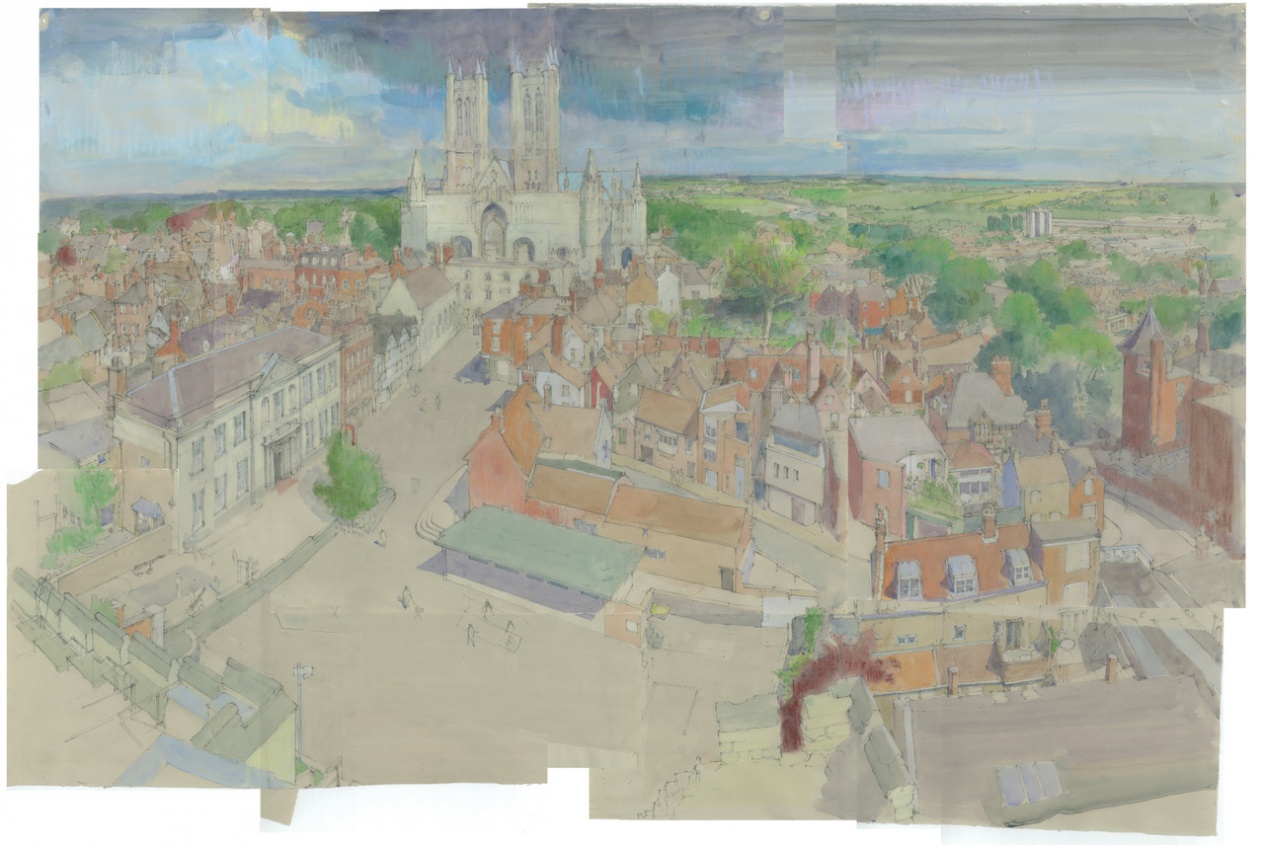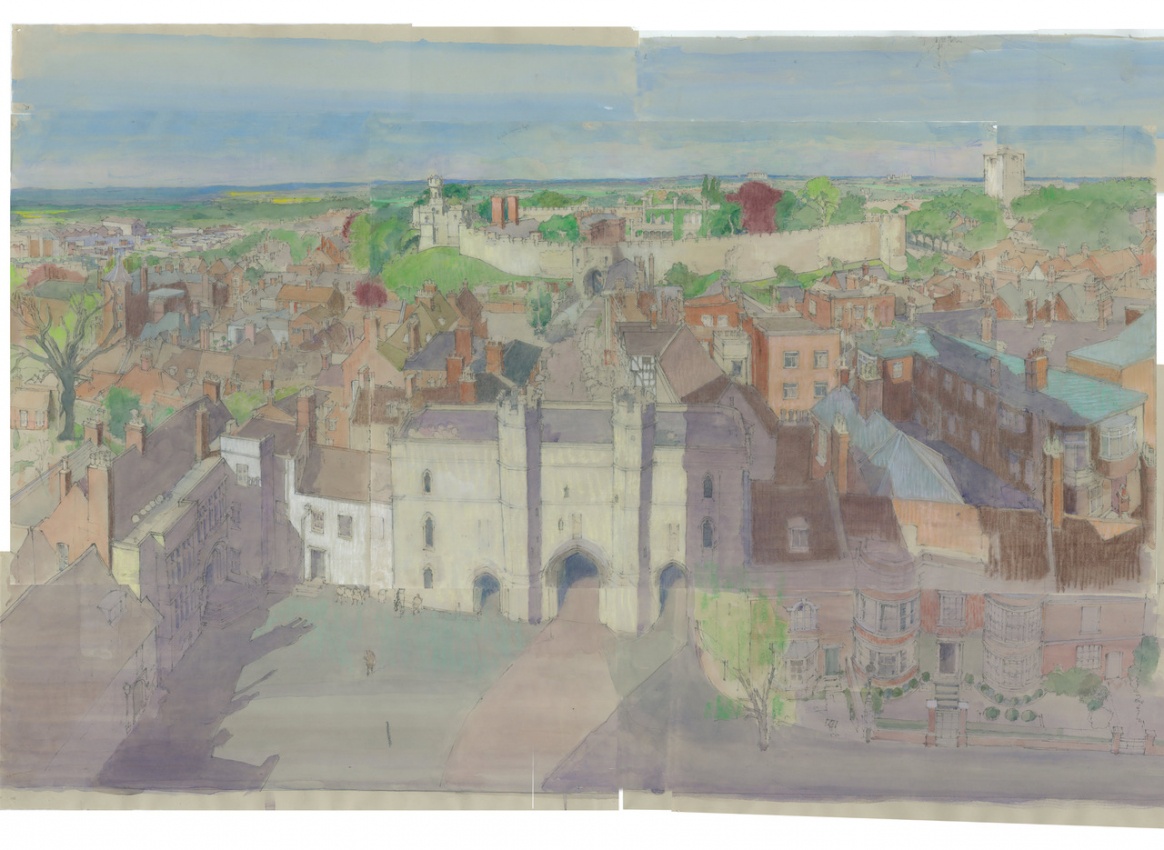In 2017, New English member Toby Ward worked on a pair of panoramic views of the city of Lincoln. What kind of challenges would working from the roof of the cathedral and the top of the castle tower present? It must have been an extraordinary experience painting ten storeys up from what was once (between 1300-1647) the world’s tallest building. Toby recalls having to take a minute to recover from the lurch of his insides when he looked over the edge, but it didn’t stop him long and he was quick to get down to business . . .
“The first task was to determine the arcs of the paintings and deciding what to include. Each canvas was to be 122 x183 cm or 4’ x 6’ so there was plenty of room to go across the cityscape and also include foreground and some of the distant landscape. The shape of the compositions I wanted to paint suggested themselves fairly quickly. Looking out from the cathedral roof, the broad pale expanse of the 11th-century castle stretched out across the middle of the view. The great stone water tower was a natural right of arc and the conical topped Victorian red brick building and a great tree formed the left edge of the picture. From the castle tower, the same cone top building was now the right edge with the cathedral itself dominating the left half of the painting with the castle battlements in the foreground meeting the left edge of the canvas, the broad sweep of the castle square occupying the front and centre.

The intriguing thing about panoramas is that the image cannot quite fit together like a conventional painting using one view, so there has to be invention, something somewhere is going to be expanded outwards or stretched up or down and judging how to handle this is largely instinctive. Having decided what I was going to paint it was time to decide how to go about it. The large canvases would be impossible to get up to those viewpoints and even if I could have got them up there the sudden strong gusts of wind would have sent them sailing across the city, probably with me attached like some primitive hand glider. No, I would have to work from drawings, so I pinned a sheet of buff-coloured drawing paper 46 x 65cm to a board and started to draw in soft, 6b pencil. In the morning I looked west onto the castle in the strong morning light then at 1pm, after lunch from a good pie shop, I would climb unto the castle tower and work on the drawing looking east, toward the cathedral, with the gentler afternoon sun at my back. I worked like this on the drawings for a total of 22 days, 3 or 4 at a time. The weather held!

My work on top of the cathedral was environmentally easier. I was on a kind of balcony at the top of the west front with plenty of room for my watercolours and only the occasional visits from orderly guided tours. In the castle tower, I wedged myself on the narrow walkway, one person wide, and looked over the battlements. The public had free access to this place and constantly filed past to take in the huge and wonderful views and squeezed around me, stopping to chat as they passed. There was no room for my paints so I coloured it right at the end of the day as the castle closed to the public and from memory.
As the drawings needed to expand I just added more bits of paper to either side and at the top and bottom. Eventually, they were formed of eight or nine sheets of different sizes and were 81 x 114 cm. It was time to leave Lincoln and take them back to the studio in Kent and square them up to transfer them to the big canvasses. These are the most ambitious landscape paintings I have done to date and certainly the most satisfying.”
You can see the final paintings under 'Artworks' below. Find out more about Toby Ward on his artist profile page where you will also find a selection of his original paintings and drawings for sale.
This article originally featured in our Friends' newsletter in 2017. If you'd like to read more articles like this, and enjoy further benefits including invitations to private views and a discount on our classes and workshops, find out how to Become a Friend of the New English Art Club.

